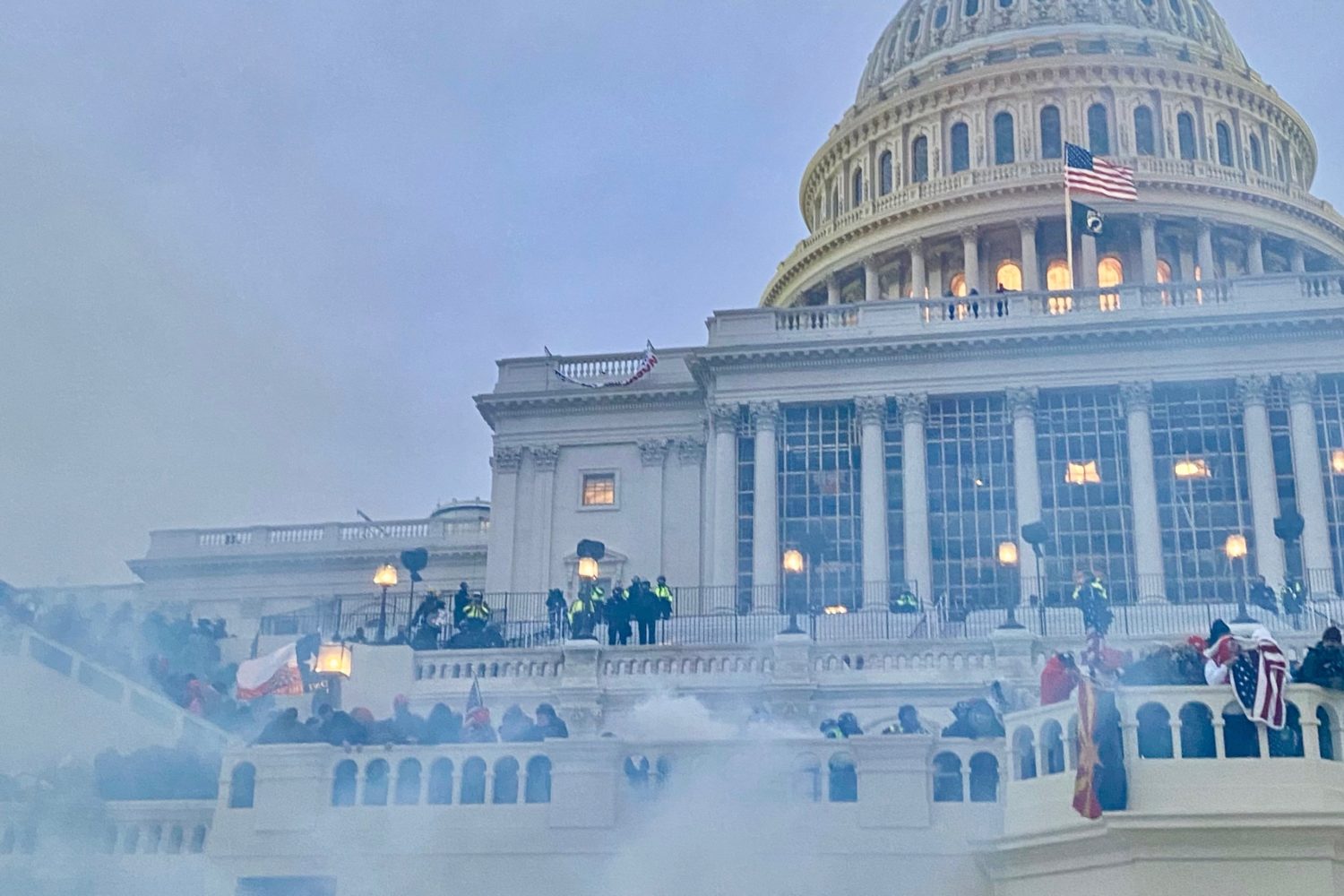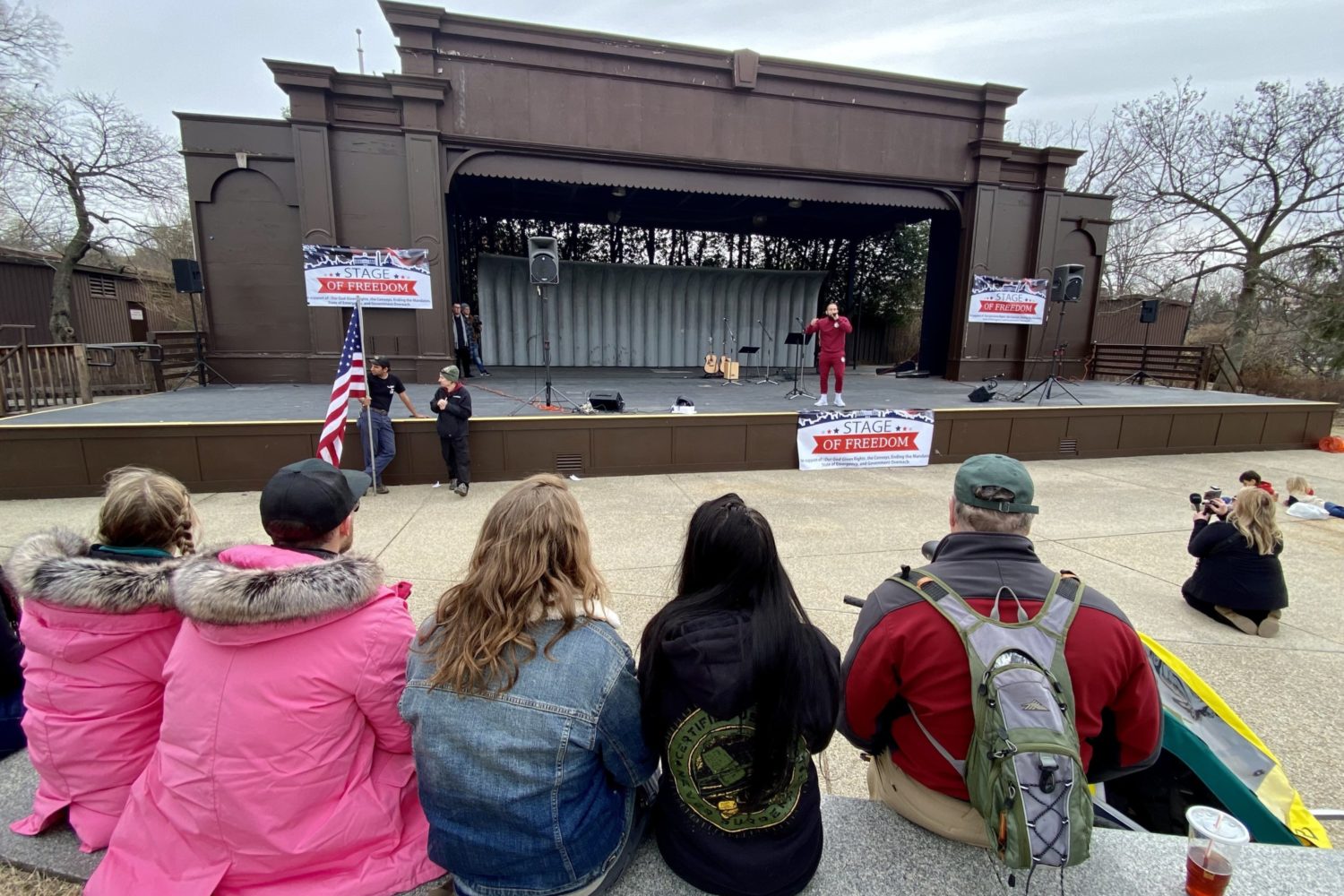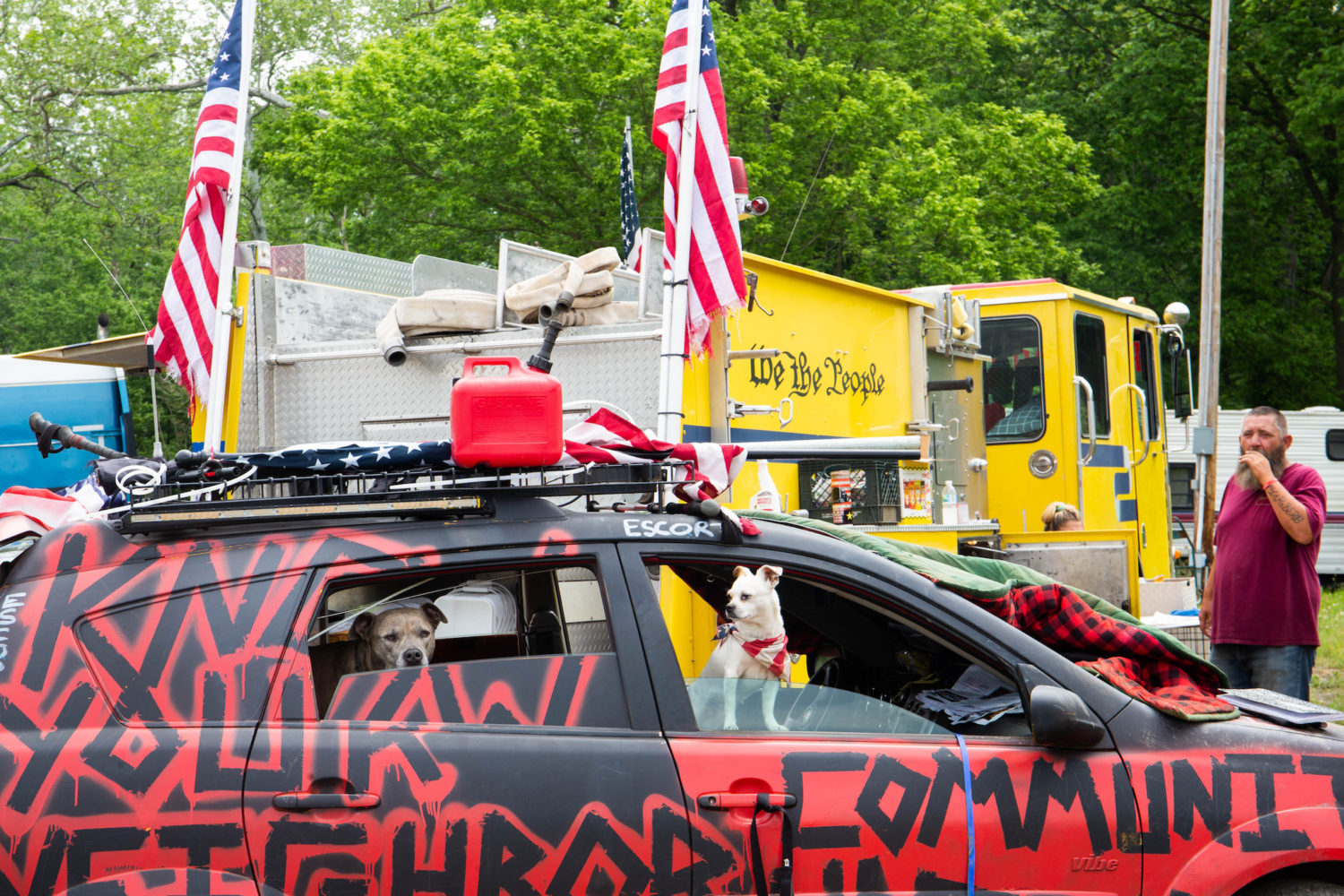The “People’s Convoy” that’s been parked in Hagerstown for weeks will finally leave the Washington region alone, Zachary Petrizzo reported for the Daily Beast Sunday night. Its numbers had dwindled, authorities mostly prevented them from causing any substantial havoc in DC itself, and it was never clear what they hoped to accomplish besides annoying area residents. Locals flipped them off on the highway, yelled at them to go home, and in one case brought an expedition into DC to a crawl by using only a single bicycle. As they got more frustrated with their directionless protest, some convoy participants reportedly got violent; others complained that by closing exits on the highway, authorities were causing them to pee in their pants.
Amanda Moore researches the far right in the US and spent a year undercover in MAGA world. As a DC resident, she says she had little choice but to pay attention to this trucker convoy, which she covers on her Twitter account and via her Substack: “It’s literally inconveniencing my life,” she says. “If this trucker convoy was in Los Angeles or Houston, I probably wouldn’t have spent too much time watching it. But like, I walk out of my office and I run into one of these dipshits.”
Washingtonian spoke to Moore about what the convoy might have wanted—it now claims to be headed back to California to oppose legislation there—and how its vague plans went awry. Here are a few lessons we gleaned:
The protests weren’t as important as the community they built
The Hagerstown Speedway became a mini-village of anti-government protesters during the convoy’s residency. Jared Holt, a resident fellow at the Atlantic Council’s Digital Forensic Research Lab who studies the far right, called it a “a sort of Gathering of the Juggalos for grandparents and uncles who’ve had their brains turned to taffy by Facebook.” Moore describes it as “like going to Coachella, but awful” and says that based on her own observations, which involved watching hours of livestreams the convoy people blasted out, “there’s a lot of people in that community whose political beliefs made them quite lonely within their own family unit.”
Still, cracks appeared. People became restless at making drives to DC each day, and sporadic cold and wet weather didn’t help their worsening moods. “They didn’t sign up to be at the Hagerstown protest,” she says. “They signed up to be at the DC protest.” Organizers insisted all along that the convoy wouldn’t go into DC, but many wanted to spend more time in town to make their points—whatever those were—and to do a little sightseeing. On livestreams, “some of the days are just people, like, walking around the cherry blossoms.”
They thought DC area residents were evil. Or brainwashed. Or maybe both
Convoy members’ initial dismay at not being welcomed by DC-area residents hardened into harebrained ideas about conducting “citizen’s arrests” or reclaiming Black Lives Matter Plaza. “I’ve heard ‘These people are evil.’ ‘These people are brainwashed,'” Moore says. “If anybody looks at them wrong, they’re like, Oh, this person is a federal agent or this person is Antifa, as if the only people who can not want you honking as you drive through a residential neighborhood are Antifa activists, right?” The film The Manchurian Candidate wouldn’t have made any sense from a plot perspective, Washingtonian ventured to Moore, if brainwashed people could also be evil. “That’s the tagline of the whole convoy,” she replied. “It doesn’t make any sense from a plot perspective.”
To the extent that the convoy had any coherent demands, Moore says, look at the pro-Trump and anti-Biden flags with which they festooned their vehicles. “Their concern is an overthrow of democracy and undermining the electoral process in the country,” she says. Their frequent expressions of admiration for January 6 prisoners were another tell.
Few if any of the convoy participants understood that DC residents have no say in what happens in Congress. Most had no idea DC’s vaccine and mask mandates—one purported reason for their protests—ended before they arrived. “I think they’re a little surprised by everything,” Moore says. “These are people who are like, ‘Oh, what is the building?’ And it’s the Capitol. They’ll get messages about Clarence Thomas, and someone will explain he’s a Supreme Court justice. It’s like, you’ve dedicated your whole identity to like politics in America, and you don’t know who’s on the Supreme Court and you don’t know what building you’re standing in front of?”
Some wanted to do a lot more than drive around
After their initial idea to circle the Beltway failed to make much of an impression on Washingtonians, some convoy people found a little more purchase by rolling up 395, while others made it into town. “They were very energized by the first couple of days of causing four-hour delays for people,” Moore says, leading some participants to campaign that they should “keep re-creating that.” So why didn’t they? “I personally speculate they must have been losing numbers. Just because I think they would keep doing that if they could.” Others wanted to break up groups and “try to enter DC from all different angles.” These plans, too, she says, suffered from the same “lack of cohesion” and the fact that “everybody has a different comfort level.”
The concern of lots of people who thought going into DC would be a “trap” melted after they made it in and saw no jackbooted thugs ready to whisk them off to the DC Jail, like the January 6 prisoners. Some nevertheless took comical precautions, like covering up their license plates or the Department of Transportation numbers they’re required to display on their vehicles. Moore and others reported some of those scofflaws to DOT, which she says was “receptive” when she called but hadn’t taken any action yet.
Their leaders got sloppy
Convoy leader organizer Brian Brase, who helped get convoy members face time with GOP members of Congress, said this weekend he would have stormed the Capitol on January 6, a strong counterargument to his already shaky claims that the convoy was a bipartisan protest. Brase went home on Sunday, as he did the previous weekend. “Trucker G,” another convoy leader, had split, too, Moore says, leading to more discord. “ Everybody really respects Trucker G, even people who hate each other,” she says. “He’s the one person trying to calm everyone down.” With their leaders AWOL, the privations of Hagerstown were bound to get people thinking fondly of home: “Morale is down,” she says. “They’re probably tired. They’re probably smelly. And they’re out of money.” Questions about what happened to the million-plus dollars the convoy raised can’t help. “They don’t see they’re accomplishing anything,” Moore says. “Why not get back on the road?”


















